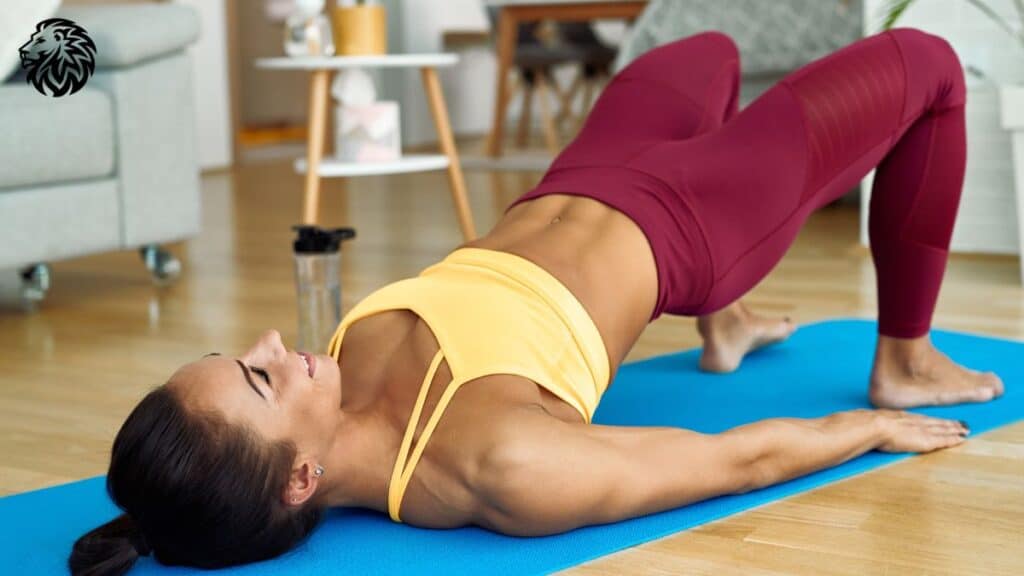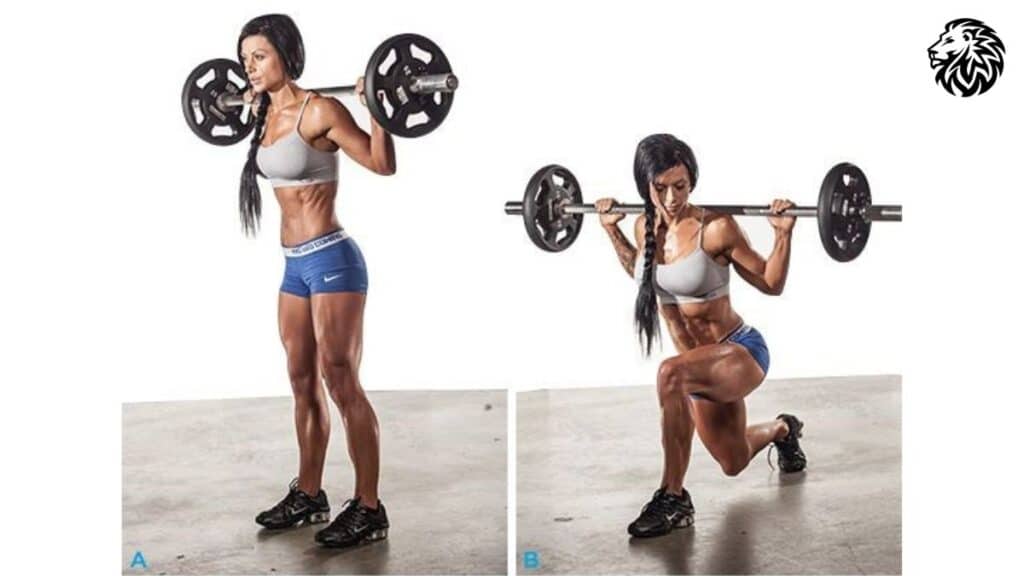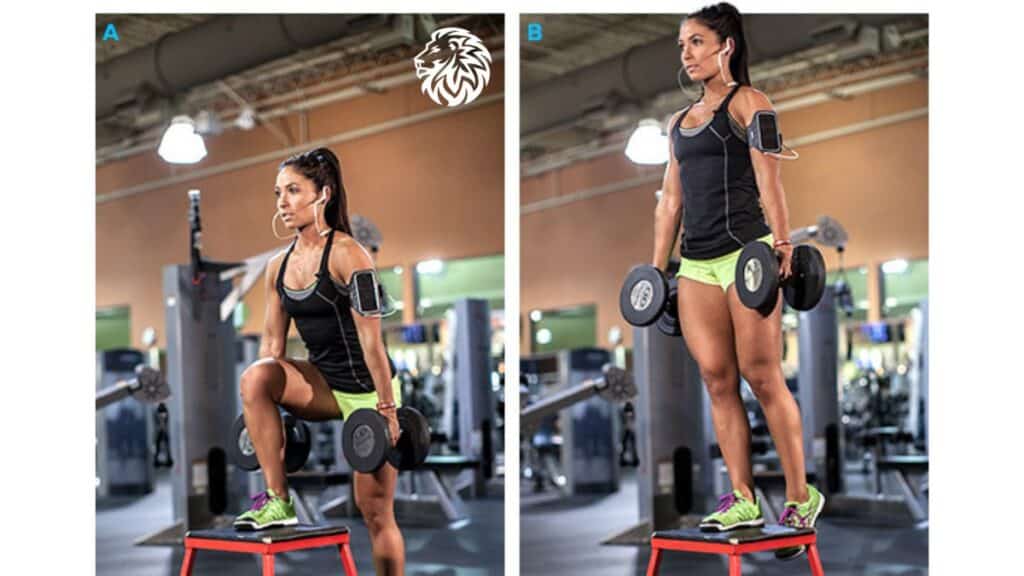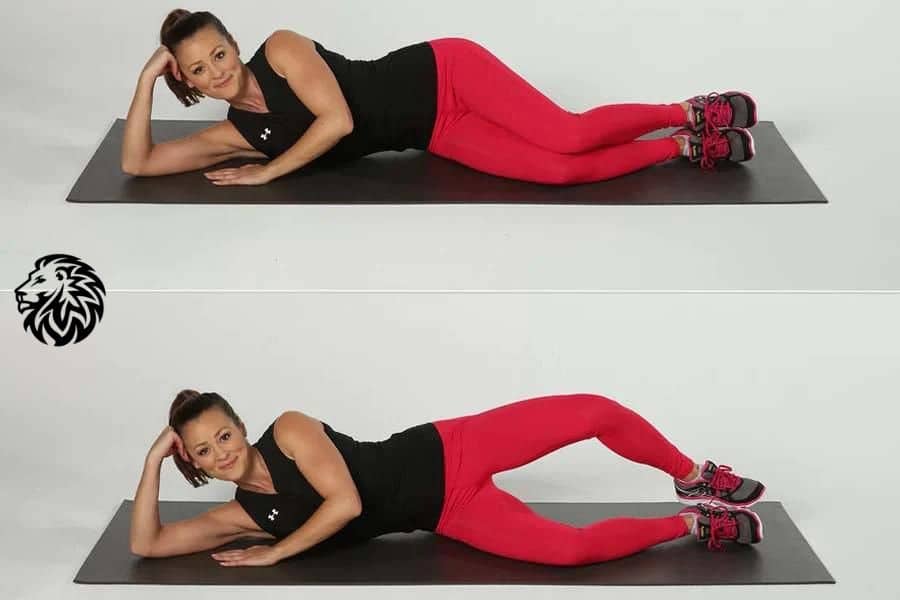Let’s talk about your glutes! You know, those mighty muscles that give your backside its shape. They’re not just for show though. These powerful muscles are behind a lot of what your body does. Think about walking, running, standing, even lifting things – that’s your glutes hard at work. But, our modern life with all its sitting down can leave these muscles feeling neglected, weaker and underused. That’s why it’s so important to do glute-focused exercises to keep them engaged, strong, and ready for action.
You’ll get more out of a good glute workout than just a great-looking behind. Your glutes help you maintain your balance and stability, crucial for sports and everyday activities. They can even help reduce lower back pain. Plus, since these muscles are so large, getting them moving can boost your metabolism, making fat loss easier and helping you to stay fit overall. We have compiled a list of eight exercises that will give your glutes the workout they deserve!
Understanding the Gluteal Muscles
Explanation of the Gluteal Muscle Group
Your glutes are made up of three separate muscles. The superstar of the group, the gluteus maximus, is the biggest of the three and is in charge of hip extension and rotation. Tucked beneath it are the gluteus medius and minimus, which work together to help your leg move away from your body’s center and rotate your thigh inward.
How These Muscles Function in Our Daily Movements and Physical Health
These muscles aren’t just involved in vigorous activities like running or jumping. They’re also integral to many basic daily movements such as standing up from a sitting position, climbing stairs, and maintaining an upright posture.
Glute strength and activation are important for preventing injury and enhancing performance. A weak gluteus medius can cause the knees to collapse inward while running or squatting. This can lead to knee pain and potentially serious injuries. Strong glutes can improve your stability, power, and efficiency in movements, whether you are playing a sport or simply carrying groceries.
Furthermore, strong glutes can help protect the lower back during lifting and other strenuous movements. They act as a counterbalance to the force exerted on the back, reducing the load and strain on these muscles. This can help prevent lower back pain, a common ailment in today’s desk-bound society.
The Importance of Glute Strength
Connection Between Strong Glutes and Lower Back Health
Strong glutes play a significant role in maintaining lower back health. They work together with the lower back muscles to support the spine, especially during movements that involve the hip joint. When the glutes are strong, they can take on a greater share of the load during these movements. This can reduce the strain on the lower back. Conversely, weak or underactive glutes can lead to an over-reliance on the lower back muscles. This can potentially contribute to back pain and injuries.
The Role of the Glutes in Maintaining Posture and Stability
The glutes are crucial for maintaining proper posture and stability. They help align the pelvis and keep the body upright during standing and walking. They also contribute to balance and stability, whether you’re moving (like when you’re running or changing directions quickly) or staying still (like when you’re standing on one foot). This role becomes especially important during physical activities, as strong, well-functioning glutes can enhance athletic performance and reduce the risk of falls and injuries.
The Aesthetic Benefits of Well-Defined Glutes
Beyond their functional role, well-defined glutes are often sought after for aesthetic reasons. They contribute to a balanced and proportionate physique, whether you’re aiming for a toned, athletic look or a more curvaceous figure. In a society that increasingly values fitness and physical appearance, many people find that having strong, shapely glutes boosts their body confidence and overall self-esteem.
Detailed Presentation of the 8 Best Glute Exercises
Exercise 1: Squats

Description of the Exercise: Squats are a quintessential exercise that targets the gluteus maximus. At the same time, squats also engage the quadriceps and hamstrings. This functional exercise mimics a movement we do in everyday life, like sitting down and standing up.
Instruction on Proper Form: Stand with your feet hip-width apart, toes pointing forward or slightly outwards. Keep your chest up, pull your shoulders back, and engage your core. Push your hips back and bend your knees as if sitting down on a chair. Go down until your thighs are parallel to the floor or as far as your flexibility allows. Push through your heels to stand back up to the starting position.
Tips for Maximizing Effectiveness: Ensure your knees do not cave inwards; they should be aligned with your feet throughout the squat. Also, make sure your back is flat and not rounded. To increase difficulty, you can hold a dumbbell in each hand or perform the squat on a single leg.
Exercise 2: Glute Bridges

Description of the Exercise: Glute bridges primarily target the glutes but also work the hamstrings and core. They can be performed with just your body weight or with added resistance, like a barbell or dumbbell.
Instruction on Proper Form: Lie on your back with your knees bent and your feet flat on the floor. Your feet should be hip-width apart and positioned so that your fingertips can just barely touch your heels. Rest your arms at your sides, palms down. Press your feet into the floor as you squeeze your glutes, lifting your hips off the floor until your knees, hips, and shoulders form a straight line. Ensure that you’re lifting with your glutes and not your lower back. Pause at the top of the movement, keeping your glutes engaged. Lower your hips back down to the floor with control, returning to your starting position.
Tips for Maximizing Effectiveness: Ensure you’re driving the movement from your hips, not your lower back. Maintain tension in your glutes throughout the exercise, particularly at the top of the movement. To increase difficulty, you can place a weight on your hips or perform the bridge with one leg.
Exercise 3: Deadlifts

Description of the Exercise: Deadlifts are a powerful compound exercise that works the entire posterior chain, including the glutes, hamstrings, and lower back. They require a barbell but can also be performed with dumbbells.
Instruction on Proper Form: Stand with your feet hip-width apart, with the barbell over your shoelaces. Bend at your hips and knees, grab the barbell with both hands about shoulder-width apart. Keep your back flat and your shoulders back. Drive through your heels to lift the barbell off the ground, straightening your hips and knees. Once standing straight, lower the barbell back to the ground by hinging at your hips and bending your knees.
Tips for Maximizing Effectiveness: Keep the barbell close to your body throughout the movement to avoid unnecessary strain on your back. Engage your core and maintain a neutral spine. Start with a weight that allows you to maintain good form, then gradually increase the weight as your strength improves. It’s essential to perform deadlifts correctly to avoid injury.
Exercise 4: Hip Thrusts

Description of the Exercise: The hip thrust is a fantastic exercise for isolating the glutes. It’s similar to a glute bridge, but with your upper back supported, allowing for a greater range of motion and more glute activation.
Instruction on Proper Form: Start by sitting on the ground with a bench directly behind you. Bend your knees and keep your feet flat on the floor. Lean back against the bench so your shoulder blades are near the top of it. Drive your heels into the ground and push your hips upward, extending as far as possible while maintaining a straight line from your knees to your shoulders. Lower back down to the starting position.
Tips for Maximizing Effectiveness: Ensure you’re pressing through your heels and squeezing your glutes at the top of the movement. To avoid strain on your neck, keep your gaze forward instead of looking up at the ceiling. You can add difficulty by placing a barbell or weight across your hips.
Exercise 5: Lunges

Description of the Exercise: Lunges are a great lower-body exercise that targets the glutes, quads, and hamstrings. They can be performed stationary, walking, or in a reverse direction.
Instruction on Proper Form: Stand tall with your feet hip-width apart. Take a step forward with one foot and lower your body until your front knee is bent at about 90 degrees. Your back knee should hover just above the floor. Push back up to the starting position, driving through the heel of your front foot. Alternate legs or repeat on one side.
Tips for Maximizing Effectiveness: Keep your torso upright and your core engaged throughout the movement. Ensure your front knee doesn’t go beyond your toes when you lower down. You can add weights or increase the step length to make the exercise more challenging.
Exercise 6: Step-ups

Description of the Exercise: Step-ups are a functional exercise that targets the glutes and quads while also improving balance and coordination.
Instruction on Proper Form: Stand in front of a sturdy bench or step. Place your right foot on the step, press through your right heel and push your body up until your right leg is straight. Lower your body back down, controlled, until your left foot touches the ground. Repeat on the other side.
Tips for Maximizing Effectiveness: Keep your chest up and your back straight throughout the movement. Drive through the heel of your foot on the step, rather than your toes, to engage your glutes effectively. To increase difficulty, you can hold dumbbells in your hands or increase the height of the step.
Exercise 7: Donkey Kicks

Description of the Exercise: Also known as glute kickbacks, donkey kicks are a great way to isolate the glutes, especially the gluteus maximus, while also working the core.
Instruction on Proper Form: Start on all fours, with your hands directly under your shoulders and your knees under your hips. Keeping your right knee bent at a 90-degree angle, lift your right leg off the ground until your thigh is parallel to the ground and your foot faces the ceiling. Lower your leg back down, but don’t let your knee rest on the ground before the next rep. Repeat on the other side.
Tips for Maximizing Effectiveness: Keep your core engaged and maintain a neutral spine throughout the movement to protect your lower back. Focus on lifting your leg using your glutes, not your lower back or hamstrings. You can add a resistance band around your thighs or wear ankle weights to increase difficulty.
Exercise 8: Clamshells

Description of the Exercise: Clamshells target the gluteus medius, a muscle that’s crucial for hip stabilization and often overlooked in other exercises.
Instruction on Proper Form: Lie on your side with your hips and knees bent at a 45-degree angle, legs stacked on top of each other. Keeping your feet in contact with each other, raise your upper knee as high as you can without moving your pelvis. Pause at the top, then slowly lower your knee back to the starting position. Repeat on the other side.
Tips for Maximizing Effectiveness: Ensure your hip stays stacked over the other hip throughout the movement, preventing your top hip from rolling back. You can place a resistance band around your thighs just above your knees to increase difficulty. Also, make sure the movement is controlled, and you’re not using momentum to lift your knee.
Creating Your Glute Workout Plan
The Ideal Frequency of Glute Workouts
The frequency of glute workouts depends on your overall fitness goals, schedule, and current fitness level. However, a good starting point for most individuals would be to incorporate focused glute training 2-3 times per week. This allows for adequate recovery time in between sessions, which is essential for muscle growth and strength gains.
Balancing Exercises for a Total Workout
When planning your glute workouts, ensure a balance of exercises that target all three muscles in the gluteal group. The eight exercises listed above offer a comprehensive approach, working the gluteus maximus, medius, and minimus in a variety of ways. Also, consider incorporating both bilateral exercises (like squats or deadlifts) and unilateral exercises (like lunges or single-leg glute bridges) for balanced strength and development.
Importance of Progressive Overload in Glute Training
Progressive overload, the process of gradually increasing the stress placed upon the body during exercise, is crucial in any successful workout program, including glute training. You can do this a number of different ways. You can increases the weight lifted, increases the number of reps or sets performed, or decreases rest time between sets. This concept ensures that your muscles continue to be challenged, promoting strength gains and muscle growth.
Reminder on the Importance of Rest and Recovery
While it’s important to challenge your glutes with regular, intense workouts, never underestimate the importance of rest and recovery. It’s during these rest periods that your muscles repair and grow stronger. Ensure you’re getting enough quality sleep and consider implementing active recovery strategies, such as light stretching or foam rolling, to support muscle recovery and performance for your next workout.
Conclusion
Getting your glutes in shape isn’t just about looking good. It’s also about overall fitness, strength, and performance in everyday life. Having strong glutes helps support your lower back, keeps your posture in check, enhances your athletic performance, and can even prevent injuries. The eight exercises we’ve introduced here are a great starting point for anyone, regardless of their fitness level.
While reading about these exercises is a good place to start, putting this knowledge into practice is where the real benefits lie. Including these exercises in your workout, whether you’re a beginner or a seasoned pro, can produce surprising results. not only to your glutes, but also to your general physical well-being and performance. Just remember, progress takes time, so keep consistent and stay dedicated to your fitness journey. You’ve got this!
Frequently Asked Questions
What can I do if I feel the glute exercises more in my thighs than in my glutes?
This is a common issue and it often means that your quads (the muscles at the front of your thighs) are overcompensating for your glutes. To address this, make sure you’re doing glute activation exercises before your main workout. These exercises “wake up” your glutes and help ensure that they’re firing properly during your workout. Glute activation exercises include movements like glute bridges, clamshells, and donkey kicks.
Can I build my glutes without using weights?
Yes, you can definitely build your glutes without using weights. Bodyweight exercises can be highly effective for glute training, especially when done with proper form and intensity. However, as you get stronger, you may find that adding weights helps to further challenge your muscles and promote growth.
What if I can’t perform a full range of motion on these glute exercises?
Start where you can and gradually build your flexibility and strength. It’s more important to maintain correct form throughout the movement than to push yourself into an uncomfortable range of motion. As you progress and your strength increases, you should be able to perform a greater range of motion.
Can these glute exercises help reduce cellulite on my buttocks?
While these exercises can certainly help to tone and strengthen the gluteal muscles, they can’t directly eliminate cellulite. Cellulite is a natural occurrence related to how fat is stored beneath the skin and it’s influenced by factors such as genetics, age, and hormones. However, regular exercise and a healthy diet can help improve the overall appearance of your skin and muscles.
How soon after childbirth can I start doing these glute exercises?
The timeline varies for everyone and largely depends on your pre-pregnancy fitness level, the nature of your delivery, and your personal recovery rate. Always consult with your healthcare provider before resuming or starting a new workout routine post-childhood. When you do get the all-clear, remember to start slowly and listen to your body.







